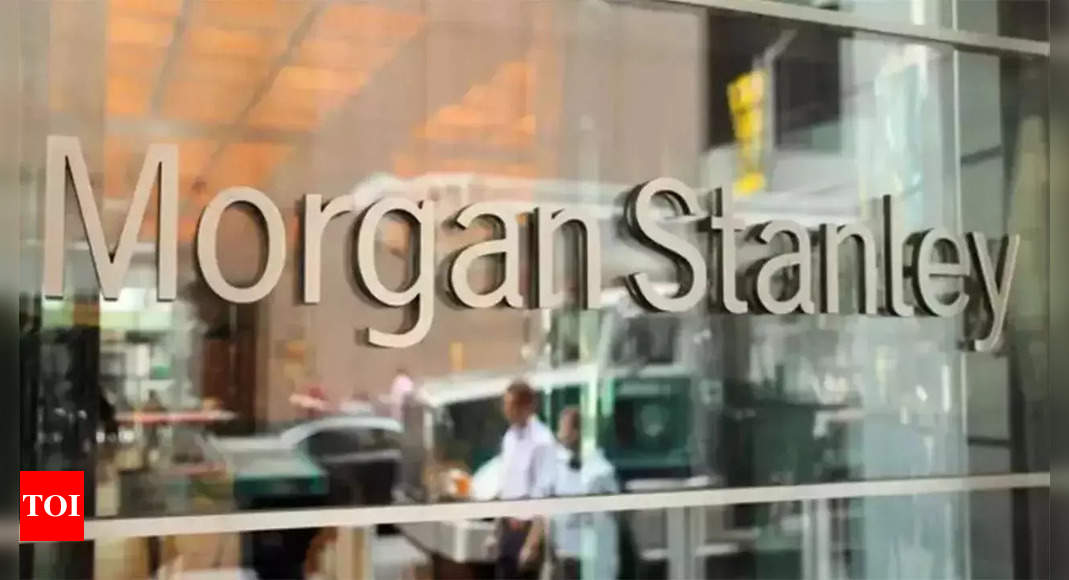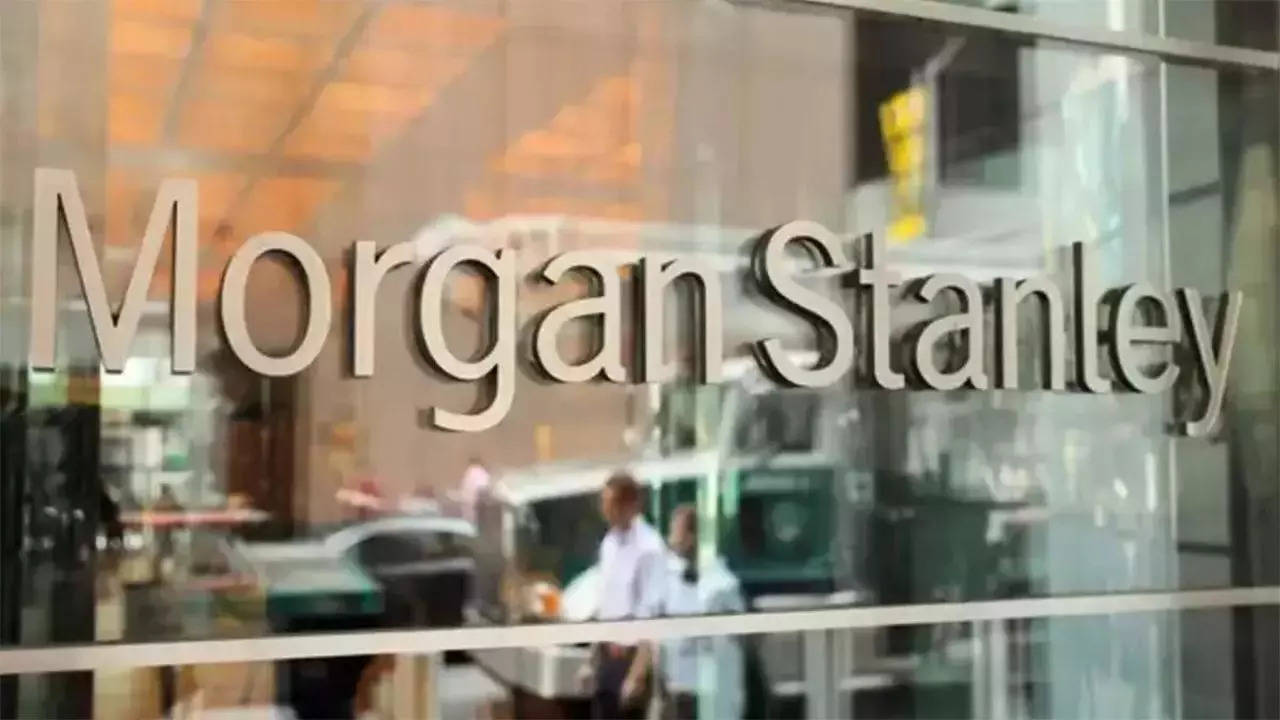[ad_1]
NEW DELHI: India’s present financial progress fee, pushed by a surge in investments, is much like the interval between 2003 and 2007 when the nation witnessed a mean progress fee of over 8 per cent, as per economists at Morgan Stanley.
Of their report titled ‘The Viewpoint: India – Why this seems like 2003-07’, Morgan Stanley highlighted capex as a key driver of progress in India.
The continuing cycle is characterised by a give attention to funding over consumption, with public capex main initially and personal capex catching up quickly. City shoppers are driving consumption progress, adopted by a rise in rural demand.
Moreover, India’s market share in world exports is on the rise, whereas macroeconomic stability dangers are being managed successfully.
One of many key options of the present enlargement is the rise within the investment-to-GDP ratio, Within the 2003-07 cycle, this ratio rose from 27 per cent in Fiscal Yr 2003 to 39 per cent in Fiscal Yr 2008, reaching a peak.
After a interval of stagnation, the ratio has now began to rise once more, touching 34 per cent of GDP and is anticipated to additional improve to 36 per cent by Fiscal Yr 2027.
Throughout the 2003-07 interval, the capex increase led to enhanced productiveness, job creation, and earnings progress. The rise in employment additionally contributed to a rise in financial savings, with the savings-to-GDP ratio climbing from 28 per cent in Fiscal Yr 2003 to 39 per cent in Fiscal Yr 2008.
When it comes to financial efficiency, India witnessed a mean GDP progress of 8.6 per cent and a mean headline CPI inflation of 4.8 per cent throughout the 2003–07 interval.
The present account steadiness remained inside a cushty vary, fluctuating between 2.8 per cent and -1.4 per cent of GDP on a 4-quarter trailing sum foundation.
Even throughout exterior shocks just like the spike in oil costs to $145 per barrel in July 2008, the present account deficit solely widened barely to 2.4 per cent of GDP within the subsequent quarter.
The expansion in gross fastened capital formation (GFCF) in India noticed a big acceleration from 8.2 per cent in 2002 to 17.5 per cent in 2004, sustaining a strong tempo of 16.2 per cent progress in 2005-07. Throughout this era, fiscal deficit was managed, banking sector points had been addressed, and the economic system was poised for an upswing in capex.
Within the present cycle, actual GFCF progress remained sturdy at 10.5 per cent within the October-December interval, surpassing the pre-Covid common of 9.6 per cent in 2017-18.
Public capex has been the first driver of this progress, as the company sector handled earlier shocks that impacted funding. With company earnings enhancing and early indicators of personal capex gaining momentum, the panorama is evolving.
The give attention to supply-side reforms by policymakers has led to an increase in actual authorities fastened capex progress from Fiscal Yr 2020. This emphasis on capex-driven progress can improve productiveness, create employment alternatives, and preserve a balanced present account.
Morgan Stanley emphasizes the significance of public funding sectors in infrastructure tasks to pave the best way for personal sector progress by addressing supply-side constraints.
These long-term investments are seen as essential for exciting non-public capex and making certain sustainable financial progress.
Of their report titled ‘The Viewpoint: India – Why this seems like 2003-07’, Morgan Stanley highlighted capex as a key driver of progress in India.
The continuing cycle is characterised by a give attention to funding over consumption, with public capex main initially and personal capex catching up quickly. City shoppers are driving consumption progress, adopted by a rise in rural demand.
Moreover, India’s market share in world exports is on the rise, whereas macroeconomic stability dangers are being managed successfully.
One of many key options of the present enlargement is the rise within the investment-to-GDP ratio, Within the 2003-07 cycle, this ratio rose from 27 per cent in Fiscal Yr 2003 to 39 per cent in Fiscal Yr 2008, reaching a peak.
After a interval of stagnation, the ratio has now began to rise once more, touching 34 per cent of GDP and is anticipated to additional improve to 36 per cent by Fiscal Yr 2027.
Throughout the 2003-07 interval, the capex increase led to enhanced productiveness, job creation, and earnings progress. The rise in employment additionally contributed to a rise in financial savings, with the savings-to-GDP ratio climbing from 28 per cent in Fiscal Yr 2003 to 39 per cent in Fiscal Yr 2008.
When it comes to financial efficiency, India witnessed a mean GDP progress of 8.6 per cent and a mean headline CPI inflation of 4.8 per cent throughout the 2003–07 interval.
The present account steadiness remained inside a cushty vary, fluctuating between 2.8 per cent and -1.4 per cent of GDP on a 4-quarter trailing sum foundation.
Even throughout exterior shocks just like the spike in oil costs to $145 per barrel in July 2008, the present account deficit solely widened barely to 2.4 per cent of GDP within the subsequent quarter.
The expansion in gross fastened capital formation (GFCF) in India noticed a big acceleration from 8.2 per cent in 2002 to 17.5 per cent in 2004, sustaining a strong tempo of 16.2 per cent progress in 2005-07. Throughout this era, fiscal deficit was managed, banking sector points had been addressed, and the economic system was poised for an upswing in capex.
Within the present cycle, actual GFCF progress remained sturdy at 10.5 per cent within the October-December interval, surpassing the pre-Covid common of 9.6 per cent in 2017-18.
Public capex has been the first driver of this progress, as the company sector handled earlier shocks that impacted funding. With company earnings enhancing and early indicators of personal capex gaining momentum, the panorama is evolving.
The give attention to supply-side reforms by policymakers has led to an increase in actual authorities fastened capex progress from Fiscal Yr 2020. This emphasis on capex-driven progress can improve productiveness, create employment alternatives, and preserve a balanced present account.
Morgan Stanley emphasizes the significance of public funding sectors in infrastructure tasks to pave the best way for personal sector progress by addressing supply-side constraints.
These long-term investments are seen as essential for exciting non-public capex and making certain sustainable financial progress.
[ad_2]
2024-03-17 10:15:36
[





















+ There are no comments
Add yours